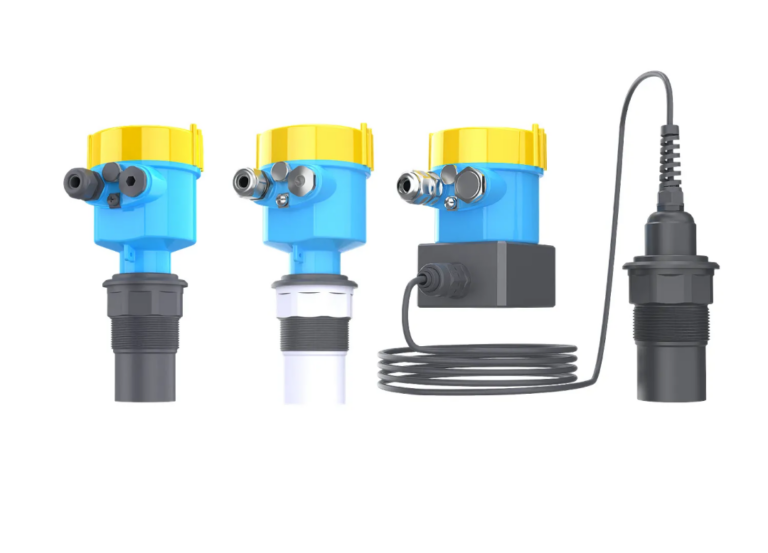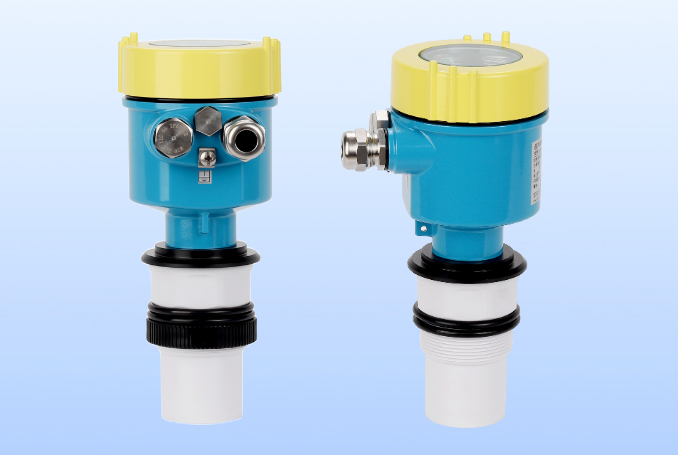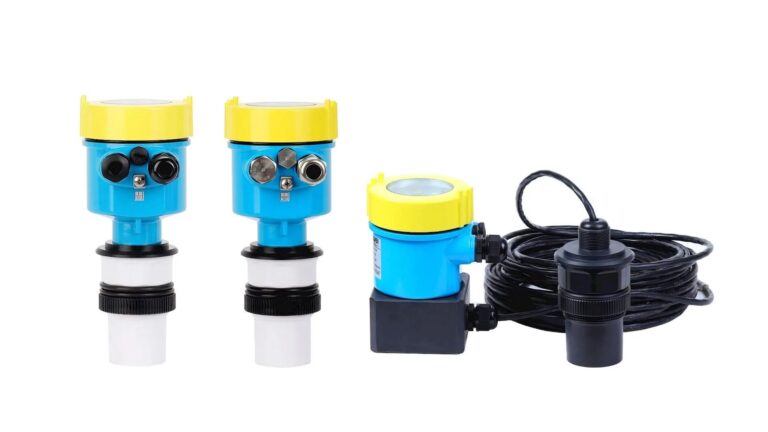1. Definition and Working Principle
An ultrasonic level sensor is a non-contact liquid level measuring device that works based on the principle of echo reflection. It emits ultrasonic pulses from a transducer, which then reflect off the liquid surface. The time it takes for the echo to return is used to calculate the level:
Distance = (Propagation Time × Speed of Sound) / 2
Where the speed of sound is typically assumed to be 340 m/s in air at standard atmospheric pressure. This non-contact measurement approach makes ultrasonic sensors ideal for hygienic applications in the food industry.
2. Structural Components
Ultrasonic Transducer (Probe): Emits and receives sound waves. Commonly made of polypropylene (PP) for its corrosion resistance, non-toxicity, and food-grade compliance.
Drive Circuit Module: Supplies power and controls signal processing. Available in 24V DC or 220V AC, adaptable to different industrial setups.
Display and Output Module: Integrated LCD for real-time level display, supports 4–20mA analog output, relay switching, and RS485 digital communication for system integration.

3. Key Features and Advantages
✅ Non-Contact Measurement
Avoids direct contact with media, ensuring high hygiene standards—ideal for raw material tanks and finished product storage.
✅ Food-Grade Safety
Housings are made from food-safe PP, resistant to acid, alkali, and solvents. No harmful substances are released, making it safe for food processing.
✅ High Accuracy and Stability
Achieves millimeter-level accuracy with built-in temperature compensation and anti-interference algorithms, minimizing the impact of environmental fluctuations.
✅ Adaptability to Harsh Conditions
Measuring range up to 60 meters, operating temperature -10°C to +60°C, IP68-rated for outdoor or humid environments.
✅ Low Maintenance
No moving parts, resistant to fouling or abrasion, significantly reducing cleaning and maintenance frequency.

4. Applications in the Food Industry
Raw Material Storage: Monitors level of edible oil, syrup, juice, etc., enabling accurate inventory management.
Process Tanks Monitoring: Ensures stable levels in fermentation tanks, mixing tanks, and other processing vessels.
CIP & Disinfection Systems: Tracks levels of cleaning agents and rinsing water during Clean-in-Place (CIP) procedures.
Filling and Packaging Lines: Controls filling volume to avoid overflows or shortages, improving efficiency.
5. Selection and Installation Guidelines
Selection Tips:
Range: Choose based on tank height (e.g., 0–10m, 0–30m, etc.)
Output Signal: Prefer 4–20mA + RS485 for compatibility with PLCs or SCADA systems.
Explosion-Proof Requirements: For flammable media like alcohol, select ATEX-certified explosion-proof models.
Installation Considerations:
Sensor Position: Mount vertically on the tank top. Avoid proximity to agitators, feed inlets, or other obstructions. Maintain minimum blind zone > 0.3 meters.
Environment: Avoid areas with heavy steam, foam, or dust. Use a waveguide tube if necessary.
Wiring: Use shielded cables and separate power/signal wiring to minimize EMI.

6. Operational Tips and Precautions
Media Limitations: Not suitable for vacuum environments or turbulent surfaces (e.g., boiling liquids).
Temperature Constraints: For high-temperature zones (>60°C), use remote-type sensors with separated electronics and probe.
Regular Calibration: Calibrate zero-point every 6 months, and clean the probe surface to maintain optimal performance.
7. Typical Brands and Configuration Example
Well-known Suppliers: International options include E+H, VEGA, Siemens; domestic manufacturers also offer competitive models.
Sample Configuration:
| Parameter | Description |
|---|---|
| Range | 0–15 meters |
| Output | 4–20mA + HART protocol |
| Material | PP housing + PTFE membrane |
| Protection | IP68, Explosion-proof (Ex ia IIC T6) |
| Use Case | Dairy tanks, soy sauce fermentation pits |
8. Development Trends
As automation in the food industry evolves, ultrasonic level sensors are advancing in the following directions:
IoT Integration: Support for wireless protocols like LoRa and NB-IoT, enabling remote monitoring.
AI Optimization: Advanced algorithms using machine learning to identify and filter out noise or interference signals.
Miniaturization: Compact models suited for small tanks or mobile food processing units.

Conclusion
With their non-contact nature, hygienic design, and robust adaptability, ultrasonic level sensors have become essential instruments in modern food production and storage. Proper selection and installation can significantly boost operational efficiency and enhance quality control across the processing chain.
